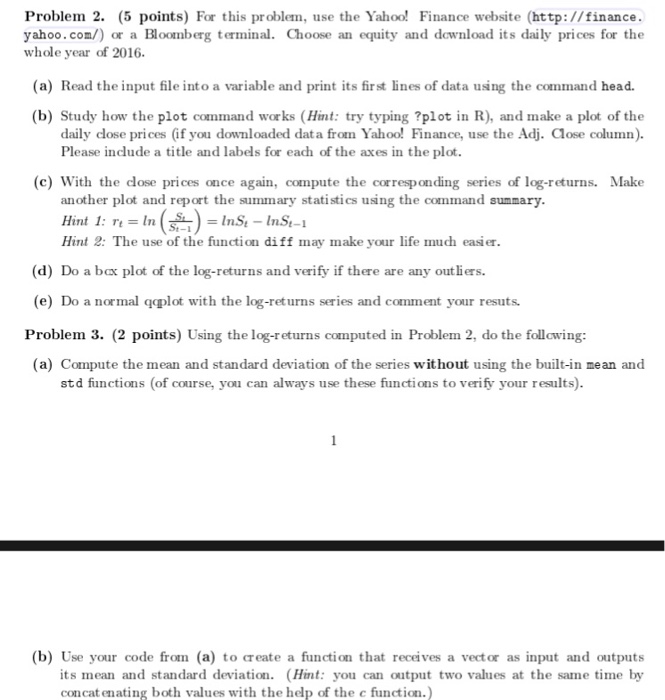
Financial Time Series
For this problem, use the Yahoo! Finance website (http://finance yahoo.com/) or a Bloomberg terminal. Choose an equity and download its daily prices for the whole year of 2016. Read the input file into a variable and print its first lines of data using the command head. Study how the plot command works and make a plot of the daily close prices (if you downloaded data from Yahoo! Finance, use the Adj. Close column). Please include a title and labels for each of the axes in the plot With the close prices once again, compute the corresponding series of log-returns. Make another plot and report the summary statistics using the command summary. Do a box plot of the log-returns and verify if there are any outliers. Do a normal qqplot with the log-returns series and comment your results. Using the log-returns computed in Problem 2, do the following: Compute the mean and standard deviation of the series without using the built-in mean and std functions (of course, you can always use these functions to verify your results). Use your code from (a) to create a function that receives a vector as input and outputs its mean and standard deviation. For this problem, use the Yahoo! Finance website (http://finance yahoo.com/) or a Bloomberg terminal. Choose an equity and download its daily prices for the whole year of 2016. Read the input file into a variable and print its first lines of data using the command head. Study how the plot command works and make a plot of the daily close prices (if you downloaded data from Yahoo! Finance, use the Adj. Close column). Please include a title and labels for each of the axes in the plot With the close prices once again, compute the corresponding series of log-returns. Make another plot and report the summary statistics using the command summary. Do a box plot of the log-returns and verify if there are any outliers. Do a normal qqplot with the log-returns series and comment your results. Using the log-returns computed in Problem 2, do the following: Compute the mean and standard deviation of the series without using the built-in mean and std functions (of course, you can always use these functions to verify your results). Use your code from (a) to create a function that receives a vector as input and outputs its mean and standard deviation
 Financial Time Series
Financial Time Series 





